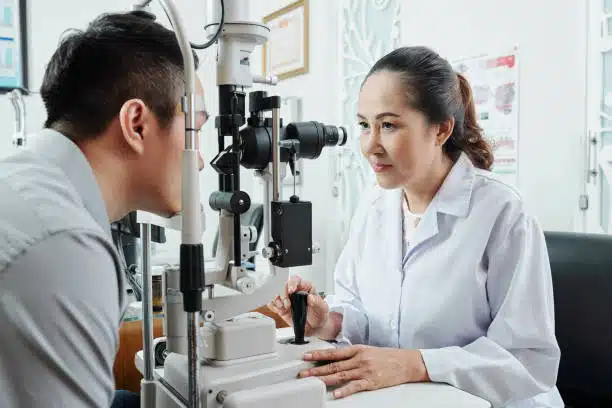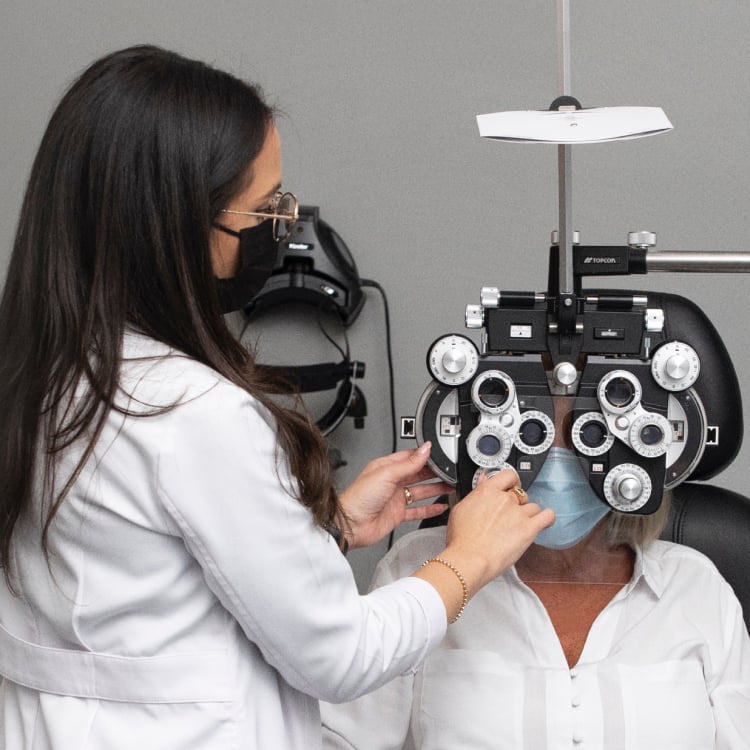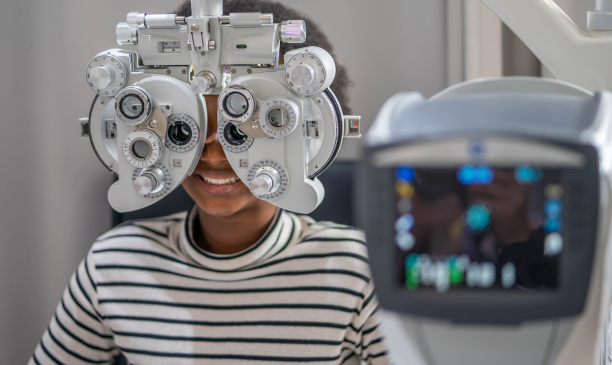How Your Eye Physician Can Assist Identify Very Early Indications of Eye Conditions and Protect Your Sight
Routinely going to an eye physician is vital for finding early indications of potentially serious eye conditions. With extensive eye tests, specialists use sophisticated technology like Optical Coherence Tomography (OCT) to identify subtle adjustments in the eye's structures.
Significance of Regular Eye Tests
Routine eye exams are a vital part of keeping overall eye health and wellness and very early detection of potential problems. They work as a safety net, permitting eye care experts to determine conditions such as glaucoma, cataracts, macular deterioration, and diabetic retinopathy at their incipient phases. These conditions, if left unnoticed, can result in extreme vision disability or perhaps blindness. Early detection via routine evaluations ensures that any kind of required treatment can commence promptly, possibly protecting vision and mitigating difficulties.
Eye examinations likewise give a comprehensive summary of one's basic health and wellness. By determining these issues early, eye treatment experts can recommend more medical examinations, leading to timely treatments past eye wellness.
Furthermore, regular eye exams assist update prescriptions for eyeglasses or call lenses, making certain optimum vision correction. This contributes to improved lifestyle, reducing frustrations, eye strain, and enhancing aesthetic quality. Therefore, sticking to a routine of normal eye exams is a necessary facet of maintaining both overall and eye health.
Innovation in Eye Health And Wellness

In addition, advancements in telemedicine have actually expanded access to eye treatment solutions, specifically in underserved or remote areas. With online appointments and remote tracking, people can receive experienced examinations without geographical restrictions. This is especially helpful for ongoing monitoring of chronic eye conditions, where routine tracking is crucial.
Innovations in expert system (AI) have also considerably influenced eye health and wellness. AI algorithms are being developed to analyze retinal photos and find abnormalities with remarkable precision, typically highlighting issues that might not be promptly apparent to the human eye. This assists ophthalmologists in making even more enlightened decisions and customizing therapy plans efficiently.
In addition, laser innovation has actually improved operations, providing minimally invasive and accurate options for dealing with vision disabilities. These technical strides collectively add to boosted individual outcomes and preserve vision health across varied populaces.

Identifying Common Eye Conditions
Eye conditions, similar to surprise treasures waiting to be uncovered, frequently manifest discreetly prior to becoming evident to those impacted. Acknowledging these early indicators is vital, as timely discovery can significantly influence the effectiveness of treatment and preservation of vision. Usual eye problems, such as cataracts, glaucoma, diabetic retinopathy, and age-related macular deterioration (AMD), existing distinct challenges that need cautious exam and proficiency to identify.
Cataracts, characterized by clouding of the eye's lens, generally establish slowly and can lead to vision problems otherwise spotted navigate to this website early. Optometrist Riverside. Glaucoma, frequently called the "quiet thief of view," might create irreparable damage to the optic nerve without noticeable signs and symptoms until sophisticated phases. Normal eye assessments are vital to keep track of intraocular stress and optic nerve health, essential in identifying glaucoma
Diabetic retinopathy, an issue of diabetes mellitus, damages blood vessels in the retina, potentially causing blindness. Early detection via retinal imaging is crucial for handling its progression. Similarly, AMD affects the macula, in charge of central vision, and can significantly influence everyday tasks. Recognizing drusen-- yellow down payments under the retina-- is key to detecting very early AMD. Each problem underscores the value of methodical eye exams to protect ocular health.
Preventative Measures and Treatments
Preventative steps and treatments play a pivotal duty in keeping ideal eye health and minimizing the progression of diagnosed conditions. Regular eye evaluations are an essential preventative procedure, permitting early detection and administration of prospective issues prior to they cause substantial damages. Throughout these exams, eye doctors can determine risk variables for problems such as glaucoma, macular deterioration, and diabetic person retinopathy, which might need timely treatment.
Therapy choices vary relying on the details problem. For example, glaucoma treatment typically involves prescription eye goes down to lower intraocular pressure, while sophisticated situations might require laser treatment or surgery. Age-related macular deterioration (AMD) can be taken care of using anti-VEGF injections, which assist slow the progression of vision loss. Additionally, diabetic retinopathy therapy might include laser surgical treatment to secure dripping capillary and stop additional retinal damage.
Way of living modifications, such as smoking cessation, controlling blood pressure, and maintaining blood sugar levels, enhance these treatments by decreasing risk factors connected with eye diseases. Safety eyeglasses and ample UV security are crucial in securing against ecological damages, thereby protecting vision. Opticore Optometry. Involving in these preventative techniques under the this contact form advice of an eye treatment professional is essential for lasting ocular health
Tips for Keeping Eye Health And Wellness
To preserve optimum vision, including sensible tips into daily regimens is necessary. A balanced diet regimen rich in omega-3 fatty acids, lutein, zinc, and vitamins C and E can dramatically minimize the threat of age-related vision troubles such as macular degeneration and cataracts. Consuming leafy environment-friendlies, oily fish, eggs, nuts, and citrus fruits adds to much healthier eyes.

Routine eye examinations are critical. They allow ophthalmologist to detect early signs of eye problems, making it possible for timely intervention. Adults ought to pursue comprehensive eye tests every one to 2 years, relying on age and threat factors.
Protecting eyes from hazardous ultraviolet (UV) rays is one more vital method. Complying with the 20-20-20 guideline-- looking at something 20 feet away for 20 seconds every 20 minutes-- can reduce digital eye stress.
Preserving proper health, such as cleaning hands prior to touching eyes and changing call lenses as suggested, lowers the risk of infections. By sticking to these standards, people can support lifelong eye health.
Conclusion
Regular eye examinations are important for identifying early indicators of eye problems, sustained by advanced modern technologies like Optical Coherence Tomography and AI analysis. Including preventative measures and therapies during these exams improves long-lasting eye wellness.
Routinely going to an eye doctor is necessary for finding early indicators view it of possibly significant eye problems.Normal eye exams are a vital element of preserving total eye health and early discovery of potential problems. By recognizing these problems early, eye care experts can recommend more medical analyses, leading to timely treatments past eye health and wellness.
They enable eye physicians to find very early indications of eye problems, enabling timely treatment.Normal eye tests are important for detecting very early indicators of eye conditions, sustained by sophisticated innovations like Optical Comprehensibility Tomography and AI analysis.